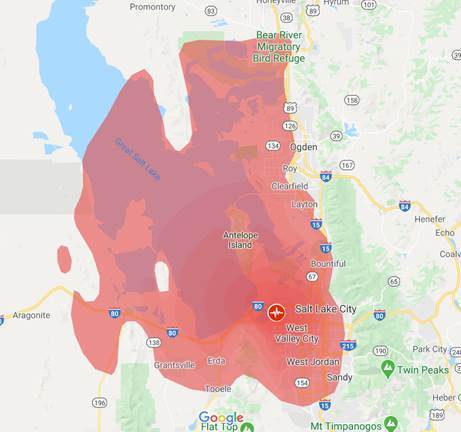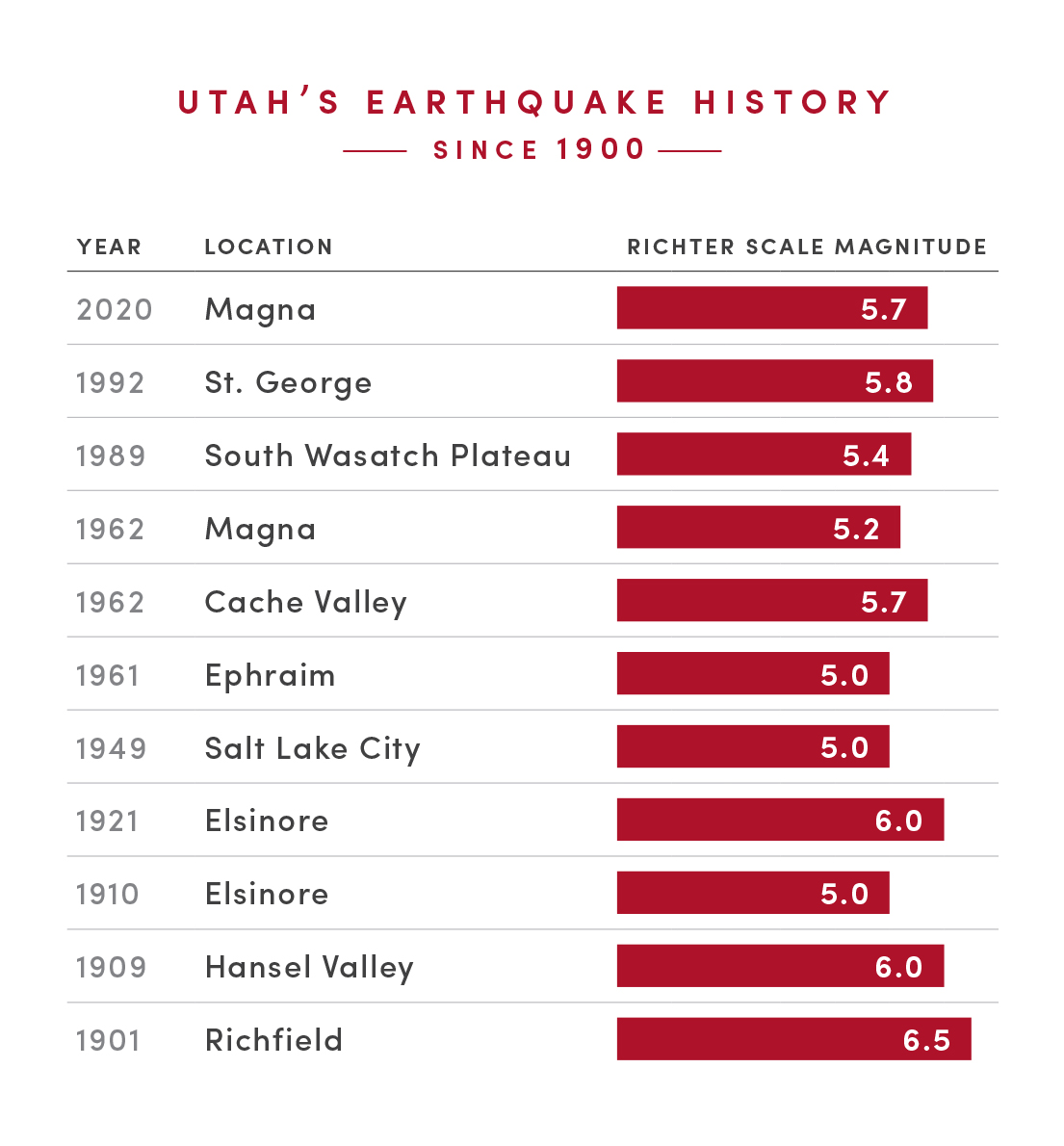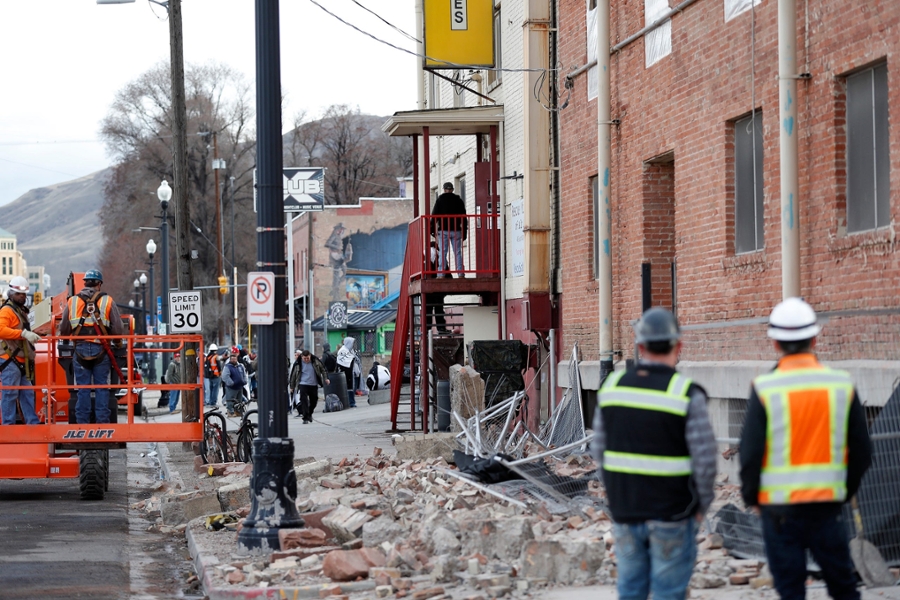Voices of U of U Health
Rocked by an Earthquake But Not Rattled

earthquake; image from earthquakes.usgs.gov
It had been almost three decades since Utah was shaken by an earthquake so strong. On Wednesday, March 18, at 7:09 am, the greater Salt Lake City area experienced a 5.7 magnitude earthquake, with an epicenter in Magna, just 10 miles west of the city.
More than 73,000 homes and businesses lost power. The Salt Lake City International Airport was evacuated and closed. Aftershocks continued throughout the day, the largest registering a magnitude 4.6 around 1:00 pm.

There was moderate building damage throughout the Salt Lake Valley. At University of Utah Health, our incident command center was already activated in response to the COVID-19 pandemic. This allowed an immediate additional focus on our earthquake response, without losing sight of the global health crisis.
Campus and clinical traffic was light because the University of Utah had already converted to online education for the remainder of the current semester. U of U Health had also postponed non-urgent surgical procedures and ambulatory provider visits for the next six weeks to achieve social distancing and slow the spread of coronavirus in our community.
We are pleased to report that, a day later, we are unaware of any injuries to patients, faculty, staff, learners, or community members as a result of the earthquake.
There was some damage to our facilities, including a broken gas pipe, several ruptured water lines, and concrete and brick disruption. Of the 44 facilities in which we provide patient care, education, research, and faculty and staff offices, 28 were quickly assessed as structurally sound so that daily activities resumed within hours.
Later in the day, an additional 11 facilities were cleared to resume normal operations the next morning. As of this morning, Thursday, March 19, five facilities remain partially or fully closed for continuing structural assessment. Overall, disruptions to patient care and our ability to respond to the pandemic were relatively minor with the exception of two community clinics which were unable to perform in-car coronavirus testing throughout the day. They reopened today for in-car evaluation.

I have spent many hours in an incident command center during my more than 30 years in academic medicine, typically responding to hurricanes and mass casualties. Simultaneously responding to an earthquake and a global pandemic from a single command center was new to me. I am enormously proud of our University of Utah Health team. We have added structural engineers to our usual list of health care heroes.
In academic medicine, we are fortunate to work with great individuals and teams. They are all mission-driven, and always rising tall in moments of grand challenge. Yesterday was one of those days in Utah. I truly appreciate the thoughtfulness, outreach, and support from so many yesterday. We knew we were not alone. Thank you for demonstrating how we are all in this together.
Now, back to the global pandemic.
